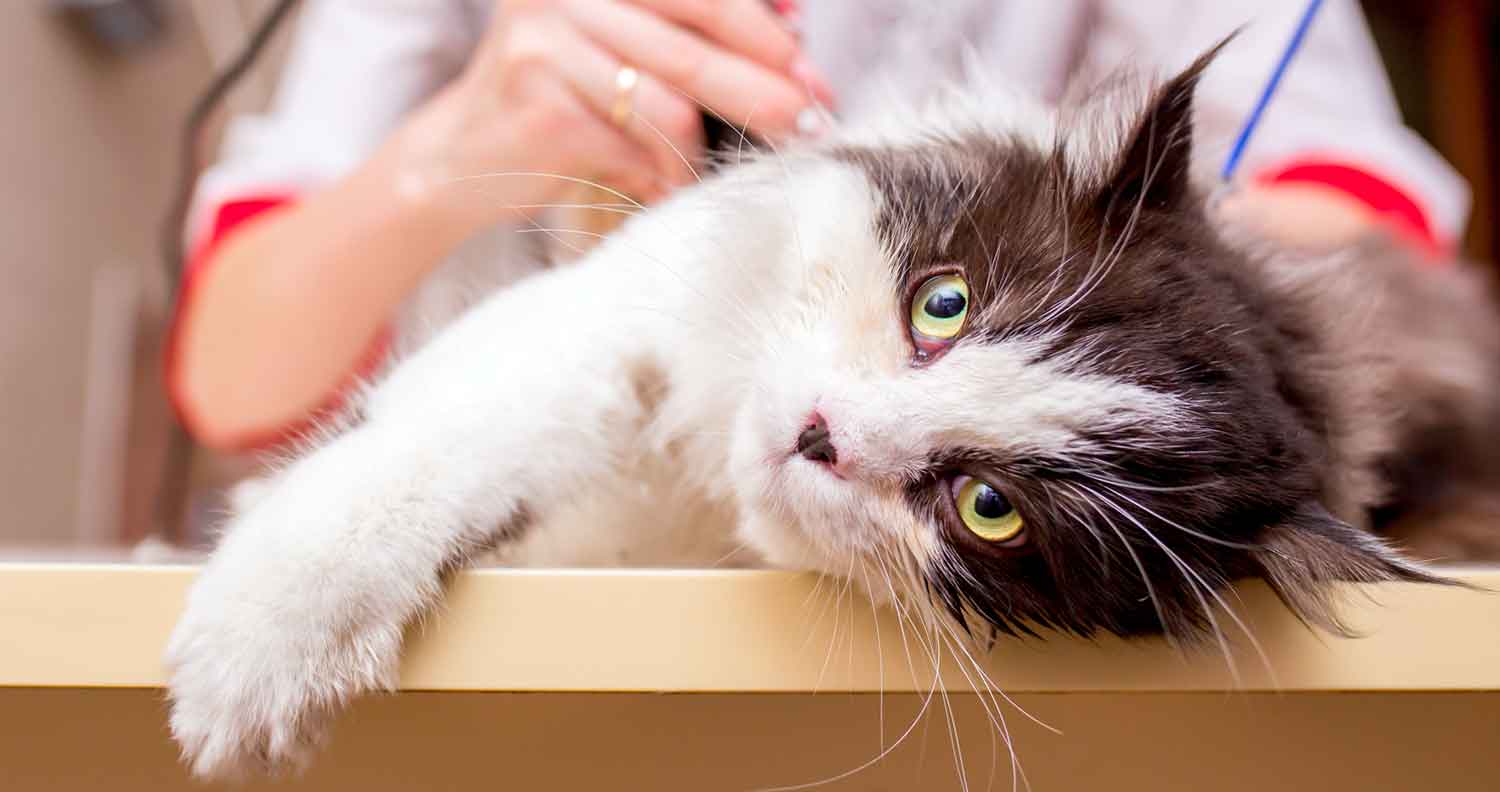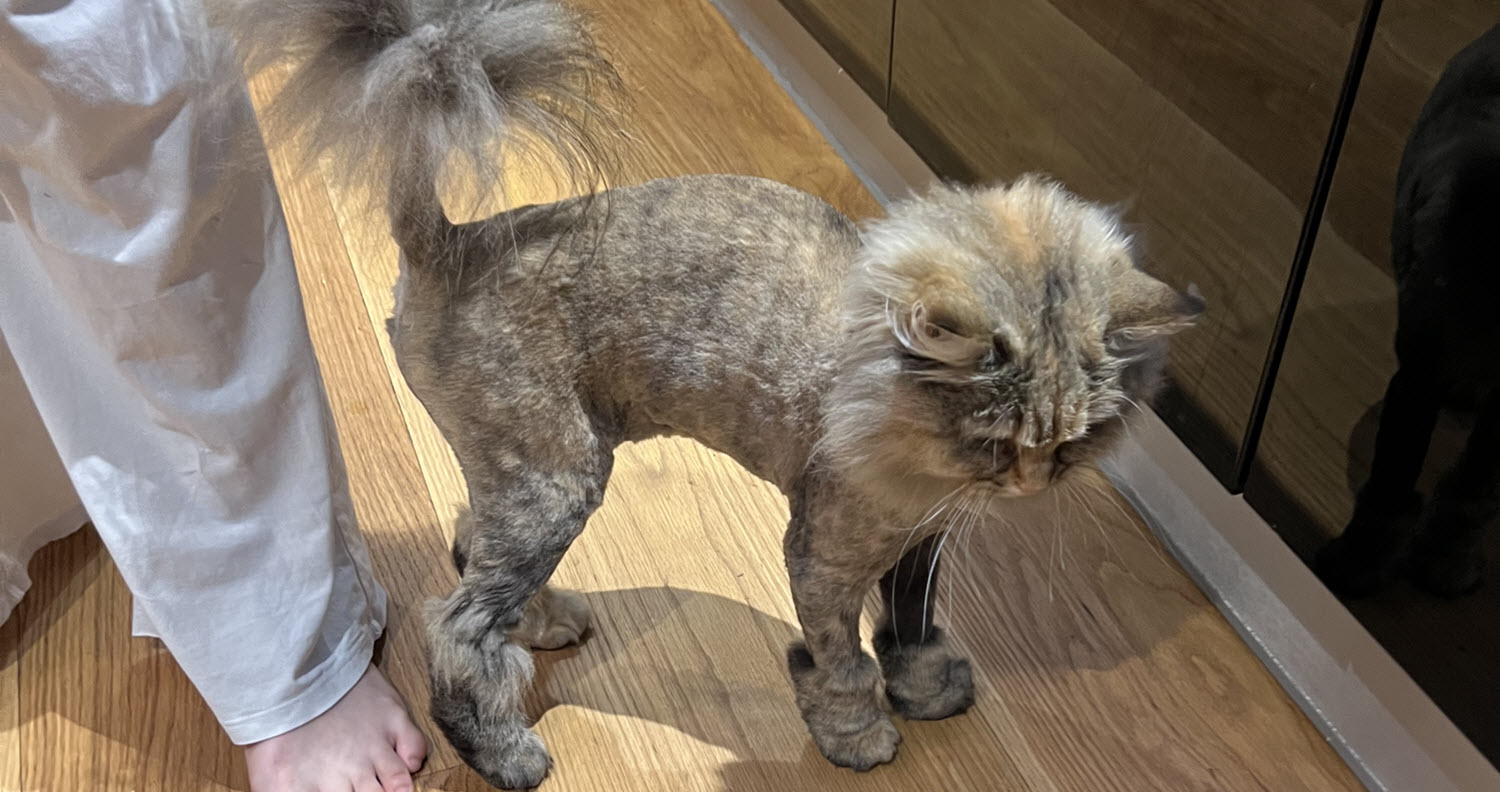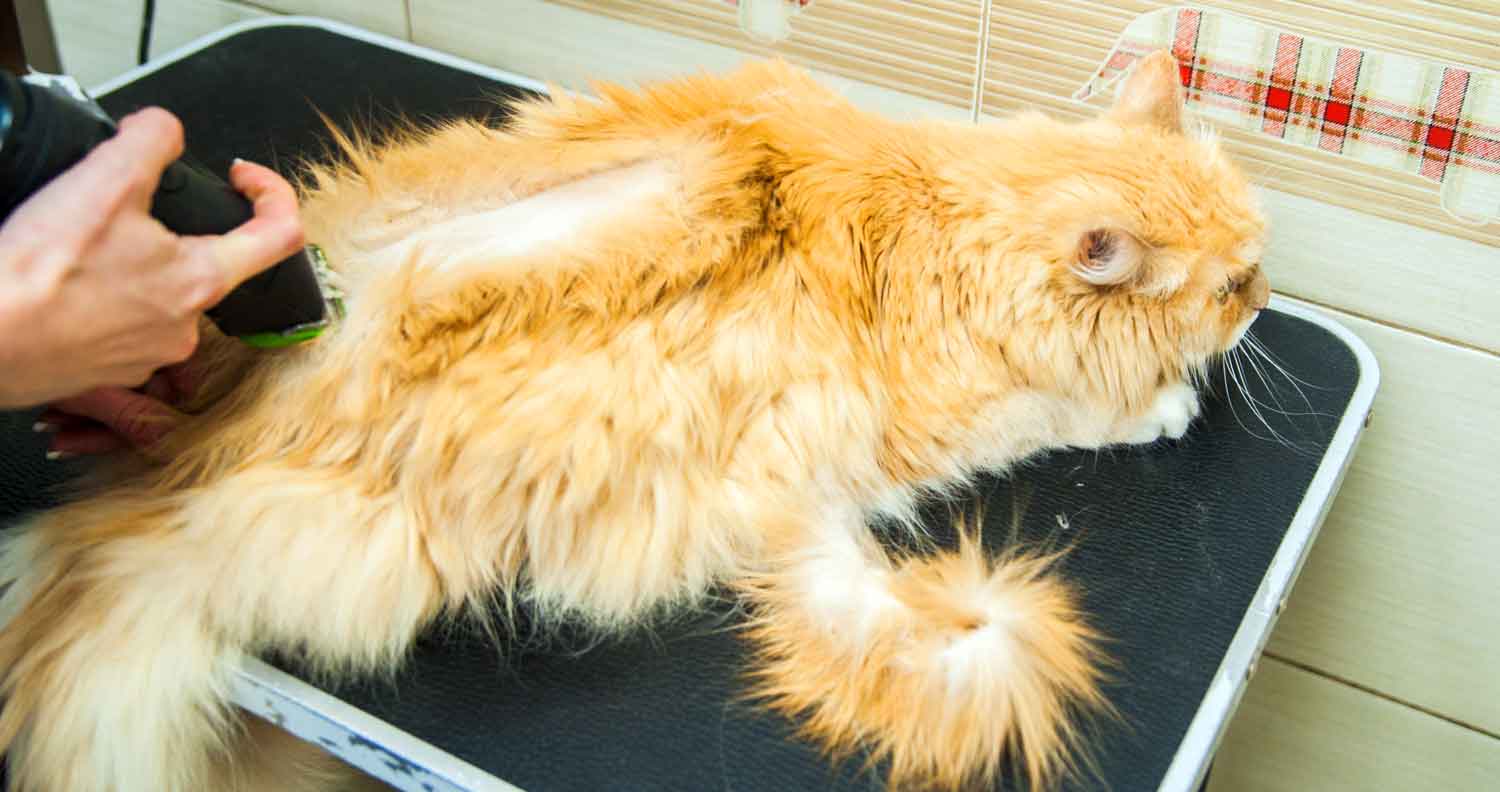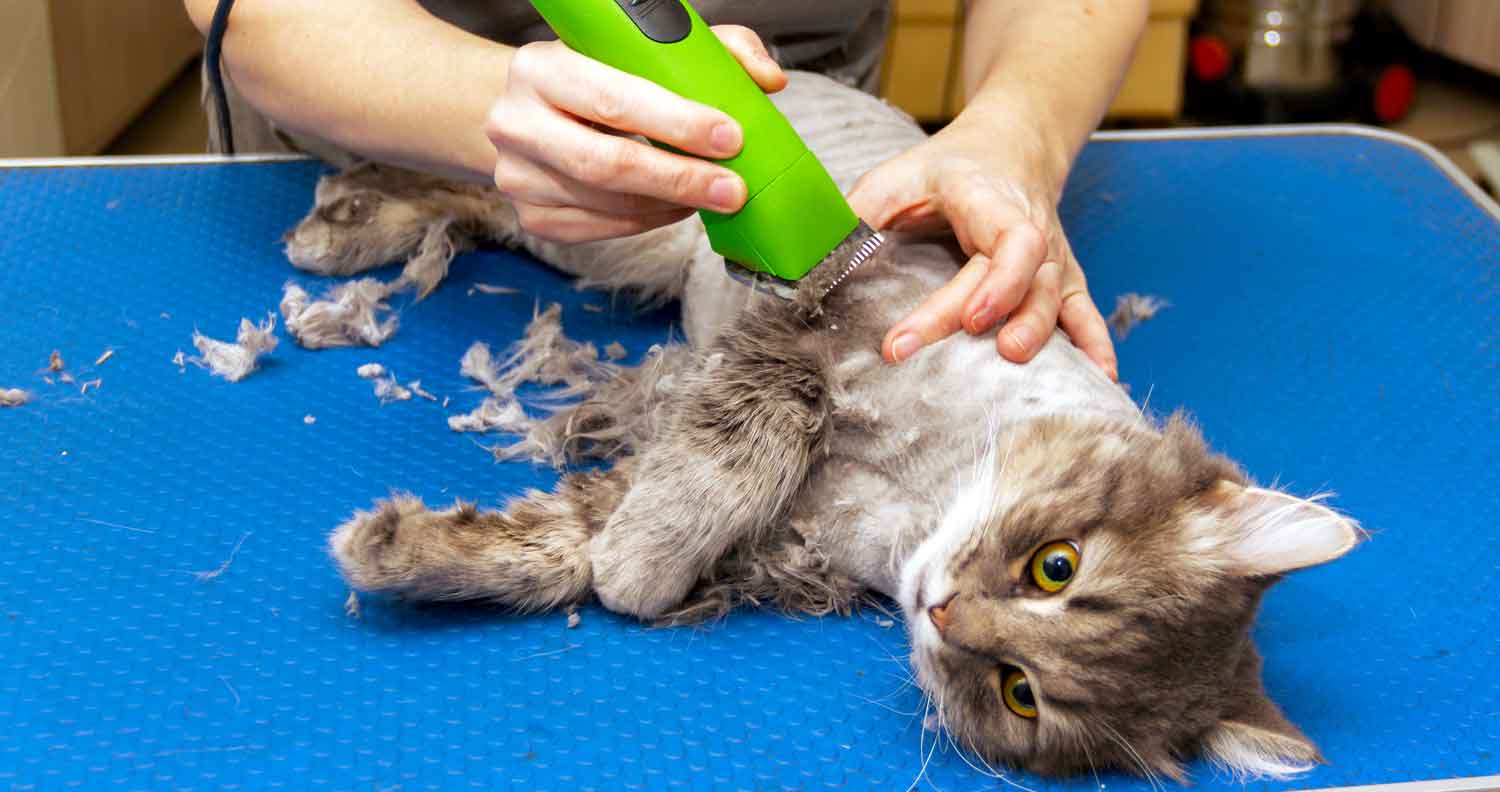Can You Shave A Cat? Everything You Need to Know
Share:

If you’re googling the phrase “Can you shave a cat?” you probably have a good reason. Our kitties are soft, fluffy, and gorgeous creatures, with fur most of us just love to pet. Few people would consider shaving their cat's coat unless they thought it was necessary.
Maybe you’re struggling to bathe a cat who’s always getting into mischief and messes? Perhaps your long-haired Maine Coon has a handful of matts on his stomach you’re struggling to untangle with a comb. Or perhaps you hope that you can shave your cat to get rid of fleas. Some people even look into shaving their cats when they’re tired of dealing with their thick coats and excess shedding.
However, shaving your furry pal generally isn’t the best idea (if you can avoid it and aren't a professional cat groomer). Cats have special fur capable of keeping their body temperature warm in winter and cool in the summer, so shaving isn’t generally necessary. Plus, shaving your cat’s fur can cause problems with the way the fur grows.
Our primary advice would be not to consider shaving your cat yourself and refer to a vet or professional groomer for advice and to have them take on the task. If that is clearly not an option for you then you need to take great care before you take it on yourself.
Today, we’re going to look at the advantages and disadvantages of a shaved cat, and how to go about shaving if you think it’s right for your feline friend.
Can you shave a long haired cat, is it even possible? Let's find out.
Can You Shave a Cat: An Introduction
Many animals with long and thick fur benefit from shaving during the summer months, to help them stay cool and refreshed. However, this isn’t the case for cats. Even if your cat has extra-long fur, it won’t cause them problems in summer, unless you fail to groom your cat correctly.
If you regularly brush your cat, the air will be able to circulate through the fur and around your kitty’s skin, to keep them feeling cool. Cats also naturally thin out some of their fur during the summer months, which is why we see extra or even excessive shedding during spring.
This means paying a groomer to give you a shaved cat every summer isn’t necessary. In fact, if your cat is distressed or upset by the process of shaving, you may do more harm than good. Not to mention, cat fur is there for a reason, providing sensory input for your feline friend, and helping to protect them against sunburn when they’re outside.
Your cat’s fur is particularly important if your feline is an outdoor cat, as it helps to avoid allowing ticks and other creatures too close to your cat’s skin. Fur can also help to keep your kitty dry and warm when they’re outside and protect against nettles, stings, and other things they might encounter when outdoors.
When to Consider Shaving a Cat’s Fur
If you’ve ever tried some of the more complex grooming jobs associated with cat care (like trimming your cat’s claws), you probably already know that shaving a cat isn’t an easy process. There are very few people who can handle this process alone (even with a docile cat), and there are a number of things that could go wrong and even injure your furry friend.
As noted below, taking your cat to your vet or professional groomer is the right way to shave your cat in most situations.
I had recent experience of this when my neighbor took her cat to the vet to deal with shaving the cat. The vet had to shave my neighbor's cat's fur because it was matted and causing problems.
In her case the vet sedated the cat to ensure that it was done safely without upsetting the cat. You can see how she turned out below.

With this in mind, it’s important to consider only really shaving your cat when it’s necessary. Some of the most common reasons include:

When Not to Shave Your Cat
While there are a handful of reasons pet owners may consider shaving their cat, most of the time there are better alternatives to the clippers. For instance, if matting is an issue, there are other methods you can try. Initially, remember prevention is better than cure, so if you have a long-haired cat, make sure you brush or comb the affected area all the way down to the skin as regularly as possible.
If your cat ends up with mats regardless of your hard work, you can try to remove them using a matt splitter, which is a special kind of tool for matts. Try to avoid tugging or pulling at matts as they can hurt your kitty’s skin. You should only consider shaving if other methods don’t work.
Another bad reason to shave a kitty is shedding. Although shedding can be annoying for a homeowner to deal with, it’s something you need to prepare for when you adopt your pet. Pets with hair shed, and short-haired cats can shed just as much as long-haired cats. Shedding is actually a sign of a healthy kitty. Try controlling the shedding as much as you can by brushing your cat regularly.
Brushing helps to pick up excess hair and get rid of it, so you don’t up with a mess on your furniture. Other bad reasons to shave your cat include:
How to Shave a Cat (Safely)
Shaving cats is not a simple process. We’d always recommend asking a professional groomer (or your vet) to assist you with this task, as you’ll struggle to manage it on your own. Remember, most cats simply won’t be willing to sit patiently and allow you to shave or cut their hair for them. Some cats can even become quite aggressive when faced with something scary – like a pair of groomers.
In my experience most vets will shave a cat when absolutely necessary but only under injectible and reversible sedation. In other words they know how most cats will not just stand for it unless they are sedated. This is usually called a 'medical groom' by vets where they have no option but to shave severe matts. But it serves to show that you should not attempt this lightly!
Cats also have extremely thin skin, which means it’s very easy to accidentally cut your feline friend when you’re in the midst of trimming. Clipper blades are extremely sharp, and they can heat up with regular use, which means you may end up burning the skin too. Unfortunately, you should never use scissors to trim large spaces on your cat’s body, as this can be dangerous too.
If you do have the training or ability to cut your cat’s fur yourself, we’d recommend taking the following steps before you start grooming:
The key to successfully shaving a cat is usually being as careful and patient as possible. The calmer you are with your shaving process, the calmer your cat will remain. Work slowly to ensure you don’t cut the skin. And if you feel your cat is becoming stressed, stop and give them some time to relax.

How to Shave a Cat in a Lion Cut
If you’ve looked at how to shave a cat before, you might have noticed there are some more “popular” options for styling the fur of your kitty. Generally, since grooming your cat’s fur into a specific style is very difficult, it’s best to talk to a groomer if you want to achieve a certain kind of cut.
The lion cut is the trim that involves shaving the body of the cat, while leaving the mane, head, and tail as fluffy as possible. The legs are sometimes shaved partially too. Because the hair is shaved so short with this kind of cut, there’s a much greater risk you would harm your cat during grooming.
Ultimately, if you’re planning on trimming your kitty yourself, your best option will usually be to stick with an easier cut – something like the comb attachment for your clipper blade will help you to achieve a teddy bear or pyjama trim, which shortens the fur slightly, without going too close to the skin. Of course, you would need to go a lot shorter with the coat if you were looking after a cat with a lot of matted fur.

Get 30% off and FREE shipping on cat food!
U.S.A. only
To Find out why we recommend chewy.com, click here
If you’re not removing the matted fur on your cat, and you’re just trimming their fur so it’s easier to manage as they get older, you could consider using a hygiene trim. This basically involves shaving the belly of your cat slightly, and around the backside, so they’re less likely to get urine and other substances stuck to their fur.
Shaving your Cat: The bottom line
Generally, most cats won’t need to be shaved or trimmed at all, so it’s best to avoid this process if you can. Shaving your cat might seem like fun, but it can be a very dangerous and time-consuming process. The only reason to consider a shaved cat is if you find that shaving your cat’s fur is in the best interests of your feline friend.
If you need to apply medication to your cat and are struggling to do so while their fur is long, or you can’t get matts out of your cat’s fur any other way, then shaving may be a necessity.
If your cat doesn’t really need shaving, then we’d recommend focusing on regularly brushing their coat to keep it in top condition instead.
And, again, in almost every case it is best to shave a cat by taking them to a vet or groomer.

How to Shave a Cat FAQ
Is it cruel to shave a cat?
Generally, shaving your cat isn’t necessary, as cats have excellent fur, capable of regulating your feline’s temperature throughout the year. However, shaving your cat isn’t necessarily cruel. If you’re shaving your feline friend for the right reasons, and you’re using the assistance of a professional groomer, it could be more of a kindness than anything else.
Just make sure you’re considering your reasons for shaving your cat carefully before you jump in. Additionally, never try to shave your cat alone unless you’re absolutely sure you can handle it. Cats can get aggressive during shaving, and there are a lot of opportunities to cause injury.
What do you need to shave a cat?
We’d recommend seeking the professional assistance of a groomer if you’re going to be shaving your cat, because shaving at home can be extremely dangerous. You’ll need to work with a groomer to choose the correct style for your cat’s fur, based on their distinct needs.
It’s also worth remembering you should never shave a cat with a set of human clippers. Cats aren’t accepting of shaving, and the loud sound of a pair of human clippers can make them even more terrified. You may need to invest in a professional pair of extra-quiet clippers instead.
Is shaving a cat dangerous?
Shaving a cat can be dangerous if you don’t have the right equipment and training. This is why it’s always recommended to seek the help of a professional and have a groomer do the shaving for you. Groomers have the right tools on hand to not only trim your cat but keep them restrained during the grooming process.
If you’re concerned your cat might be upset and anxious during the grooming session, a groomer will be able to help you avoid any unnecessary risks.
Do cats need to be shaved during summer?
Unlike dogs, cats don’t generally need to be shaved during the summer months to keep them cool. Cats have fur which can regulate the temperature of the feline at any time of the year, regardless of whether it’s winter or summer.
However, if you do notice any signs of your cat seeming overheated or unwell, like excessive drooling or panting, it’s important to see a vet immediately. Don’t simply assume shaving your cat will solve the problem.
What do I do if I cut my cat when shaving its fur?
If you accidentally nip or cut your cat’s skin when you’re grooming him or her, then you should seek vet attention immediately. Cat skin is very thin and sensitive, so it’s easy to clip accidentally. You should always consider having a groomer do the clipping instead for this exact reason.
Aside from keeping an eye out for nicks and cuts, it’s also a good idea to check for burning and razor burn when you’re looking after your cat’s fur. Remember the clippers you use to trim your cat’s fur can get really hot during use.

Get 30% off and FREE shipping on cat supplies!
U.S.A only
To Find out why we recommend chewy.com, click here
Affiliate disclosure : We Love Cats and Kittens is a participant in several affiliate programs including the Amazon Services LLC Associates Program, and the Chewy affiliate program. These are affiliate advertising programs designed to provide a means for sites to earn advertising fees by advertising and linking to products on their sites. If you click on links in our blog posts and articles we may be paid a commission.
Share:

